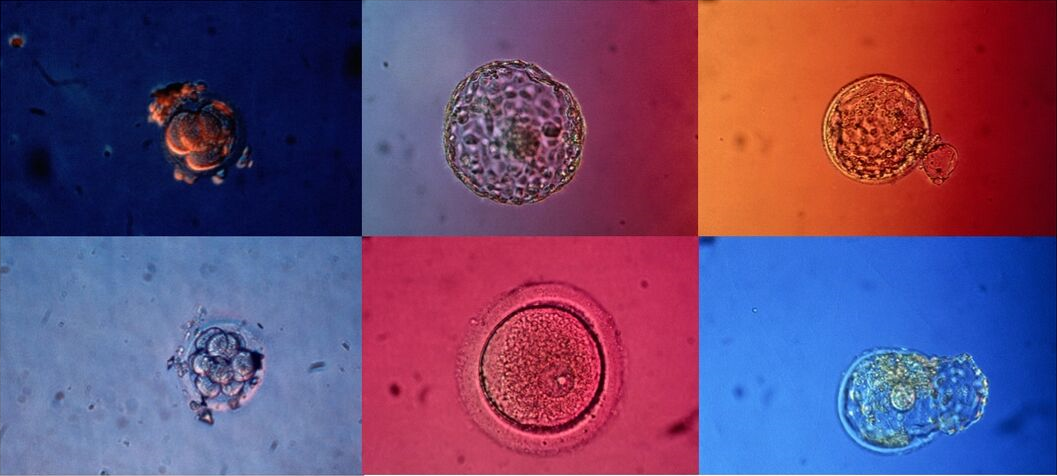On 25 July I went along to a special event hosted by the Science Museum in London to celebrate the 40th birthday of Louise Brown, the first ever IVF baby to be born. Brown shared the stage with Professor Roger Gosden, who is an expert in female infertility and former doctoral student of the IVF pioneer Robert Edwards, and their conversation was chaired by Roger Highfield from the museum. Together the three meandered through decades of IVF history as well as reflections on what the future of IVF might hold.

After the talk and a grand finale happy birthday singalong, all guests were led through to a pop-up fertility fair in the museum’s flight gallery. Embryologists from London fertility clinics talked visitors through the basics of modern IVF, including (of particular interest to me) how they use time-lapse imaging tools to inform the embryo selection process. The embryologists narrated clips of developing embryos to explain in detail what IVF is and does, as well as what it can’t do. Given the focus of the ‘Remaking the Human Body’ project on visual tools in IVF, it was exciting to encounter embryo imagery in a semi-public, non-clinical setting – the enlarged films of dividing cells were employed very effectively to demonstrate the spectacle of IVF and capture people’s interest.
In line with the theme of the evening, following the fair I visited a new Science Museum exhibition entitled ‘IVF: 6 Million Babies Later’. This exhibition, which will run until November 2018, traces IVF from its initial development right through to the present day.
Controversial treatment
The exhibition included a variety of medical equipment that is routinely used in fertility treatment, such as pipettes, petri dishes, needles and the numerous medicine vials required by patients going through an IVF cycle. It also displayed some of the original laboratory and clinical tools used in IVF during the 1970s – the time at which Edwards, along with Patrick Steptoe and Jean Purdy, were developing the technique. There was a desiccator, which is a large glass jar that was used to incubate embryos ‘in vitro’ (literally ‘in glass’), and early versions of surgical tools used to diagnose fertility problems.
Steptoe, I learnt, led the way in advancing laparoscopy, which is a surgical technique that enables surgeons to see the reproductive organs and retrieve eggs without making major incisions through the body. Gosden explained that this technique was initially feared by the public and critiqued by physicians for being an unsafe, unethical and experimental procedure. While the early advancement of laparoscopy was not without risks, it paved the way for what has since become a central procedure in IVF treatment and gynaecology more broadly.

The widespread public opposition to and panic around IVF at the time of Brown’s birth in 1978 was emphasised throughout Gosden and Brown’s conversation. Brown recollected how she had gradually come to realise the extent to which her parents had shielded her from the public controversies and protests that surrounded her birth as the first ‘test-tube baby’. Gosden described social anxieties about the consequences of ‘tampering’ with the ‘natural’ reproductive process and how this permeated the media coverage of IVF pioneers Edwards, Steptoe and Purdy, who were portrayed as ‘crazy scientists’ attempting the absurd.
Patient pioneers
The exhibition also offered a glimpse into the early life of IVF through original research notebooks belonging to IVF laboratories. Some of these contain handwritten clinical data for 282 women from all over the UK who volunteered to participate in hundreds of egg collections across the 1960s and 70s. While the successful birth of Brown was a ground-breaking and celebrated moment in IVF history, Gosden also drew attention to the decade of experimentation that preceded Brown’s birth and the hundreds of women who underwent invasive procedures without getting the baby they intensely wished for.
During the early years of IVF, the treatments offered were hugely unsuccessful and it was not uncommon for clinics to have success rates of zero. Within this context of unlikely success, the fact that women were undergoing procedures that were supported by very limited evidence offered a testament to what they were willing to undertake for a tiny chance of having a baby. These women and men are the IVF pioneers that we do not often hear about, and Gosden highlighted how their commitment and hope laid the foundation for developing safe and effective fertility treatments for future infertility patients.
Most pertinently for me, the evening as a whole offered a unique opportunity to reflect on the current state of IVF in light of the personal life stories of people who were intimately involved in the earliest stages of its development. The strength of the exhibition specifically, lies in how it portrays and gives a voice to the complex embodied experiences of people who have undergone fertility treatment.
Click here to see more articles on IVF from the Science Museum.
